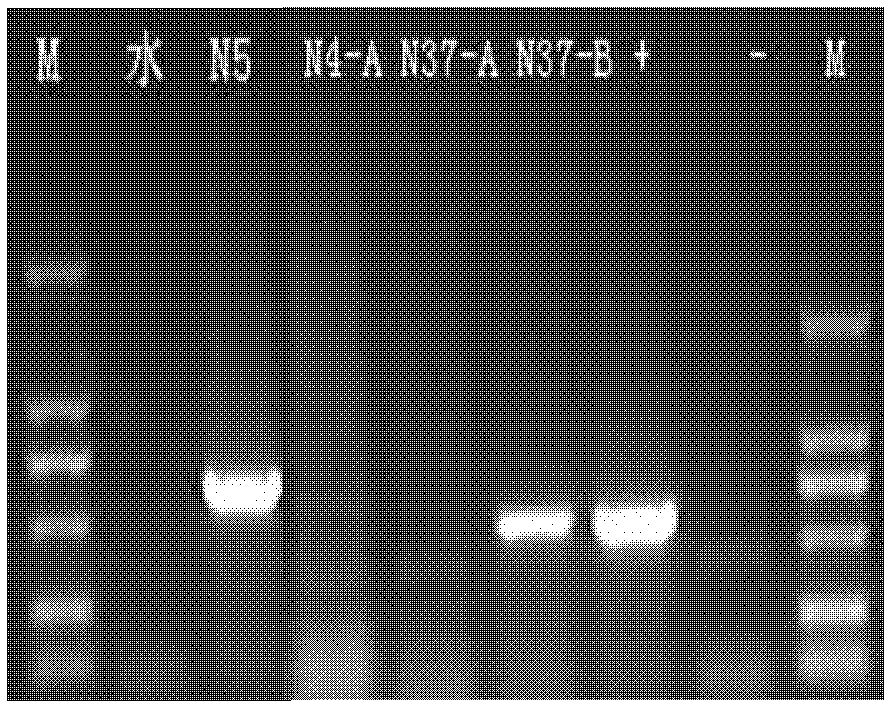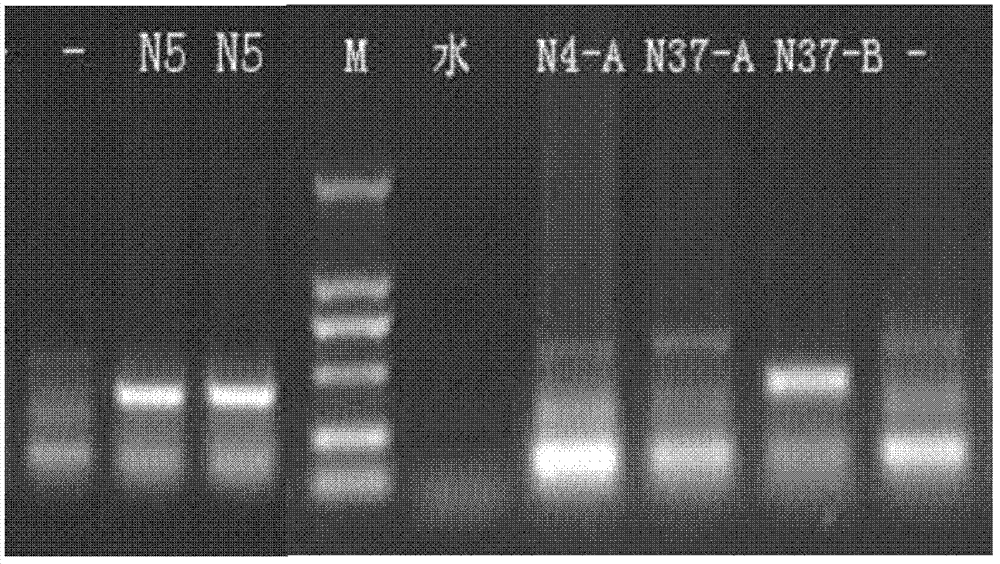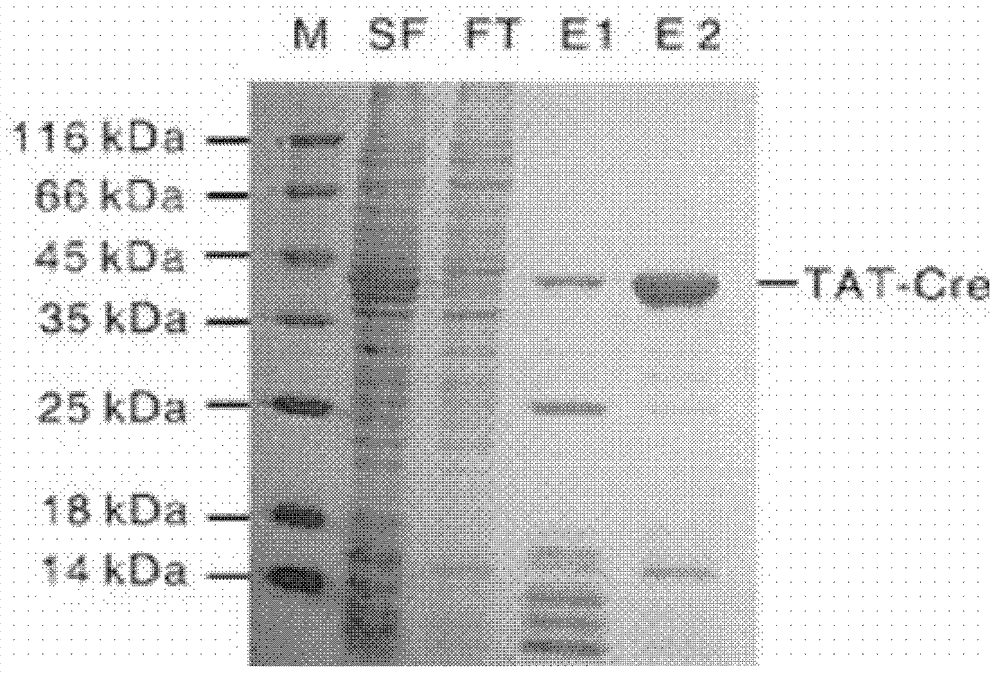Method for positioning and integrating transgenosis and application thereof
A gene and exogenous gene technology, applied in the field of transgene positioning and integration, can solve problems such as breeding difficulties, excessively high integration copy number, and changes in transgene expression traits.
- Summary
- Abstract
- Description
- Claims
- Application Information
AI Technical Summary
Problems solved by technology
Method used
Image
Examples
Embodiment 1
[0098] Example 1 Obtaining loxp localization integration cell line
[0099] 1. Isolation of Human Lysozyme Transgenic Goat Fetal Fibroblasts
[0100] On the 32nd to 40th day after mating between a normal commercially available female goat and a ram containing the wild-type Loxp element (the ram is disclosed in patent ZL200510110772.1), the fetus is removed by surgical operation and transferred to a super-clean workbench, and the obtained Wash the fetus twice with PBS buffer containing 1% double antibody (penicillin 100U / ml, streptomycin 0.1mg / ml), remove the head, limbs and viscera, and soak the remaining tissues in 75% ethanol for 30s; Wash fetal tissue 3-5 times with PBS without double antibody, then cut into 1mm 3 Tissue pieces of different sizes were laid flat on a 100mm cell culture dish, and the tissue pieces were evenly spread out, and the GMEM culture medium (purchased from Invitrogen Company of the United States) added with 10% FBS, penicillin and non-essential amino...
Embodiment 2
[0113] Example 2 Expression and purification of TAT-Cre enzyme
[0114] Pick the expression plasmid pET 28.2TAT-Cre containing TAT-Cre recombinase (this vector can be freely obtained from Howard Hughes Medical Institute, and the vector structure, multiple cloning sites, complete nucleic acid sequence and other information are from http: / / cmm.ucsd.edu / Lab_Pages / dowdy / Vectors / vector_seq / pET28.2bTATCRE.txt ). The colony containing the TAT-Cre recombinase expression plasmid was inoculated in 20ml of LB medium containing kanamycin, and the bacteria were shaken overnight at 37°C. Inoculate the overnight bacterial solution containing the target plasmid in 2L kana LB medium at a ratio of 1:100, shake the bacteria for 3 hours at 37°C. Add IPTG to induce expression, make the final concentration 1mmol / L, shake the bacteria for 3h at 37°C. Centrifuge at 3000×g for 10 minutes to harvest the cells. Resuspend the cells in 100ml pre-cooled PBS, centrifuge at 5000×g for 10 min, and harv...
Embodiment 3
[0119] Example 3 Introduction of Loxp mutation sites and identification
[0120] One side of the full artificial synthesis is a mutant Loxp site, the other side is a wild-type homo-directional Loxp site, and the middle is the full sequence of the expression framework of the screening marker genes neo and TK (sequence shown in SEQ ID NO.: 31) . It is cloned into the SalI site of the commercially available pGEM-7Z vector, and the recombinant plasmid is named pGEM-2loxp'. Using the TAT-Cre-mediated loxp recombination method obtained in Example 2, this element was introduced into human lysozyme transgenic goat fetal fibroblasts, and the selection marker across the wild-type homoloxp site in the cells was replaced. The studies on the positioning and integration of the transgenic components carried out below in this paper all use the human lysozyme transgenic goat fetal fibroblasts with the mutated loxp site.
PUM
 Login to View More
Login to View More Abstract
Description
Claims
Application Information
 Login to View More
Login to View More - R&D
- Intellectual Property
- Life Sciences
- Materials
- Tech Scout
- Unparalleled Data Quality
- Higher Quality Content
- 60% Fewer Hallucinations
Browse by: Latest US Patents, China's latest patents, Technical Efficacy Thesaurus, Application Domain, Technology Topic, Popular Technical Reports.
© 2025 PatSnap. All rights reserved.Legal|Privacy policy|Modern Slavery Act Transparency Statement|Sitemap|About US| Contact US: help@patsnap.com



